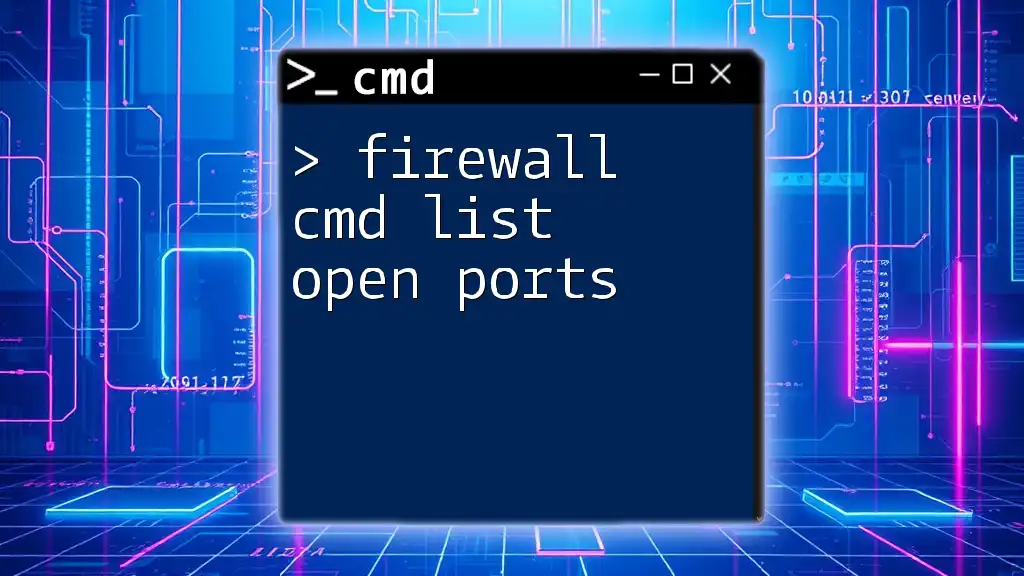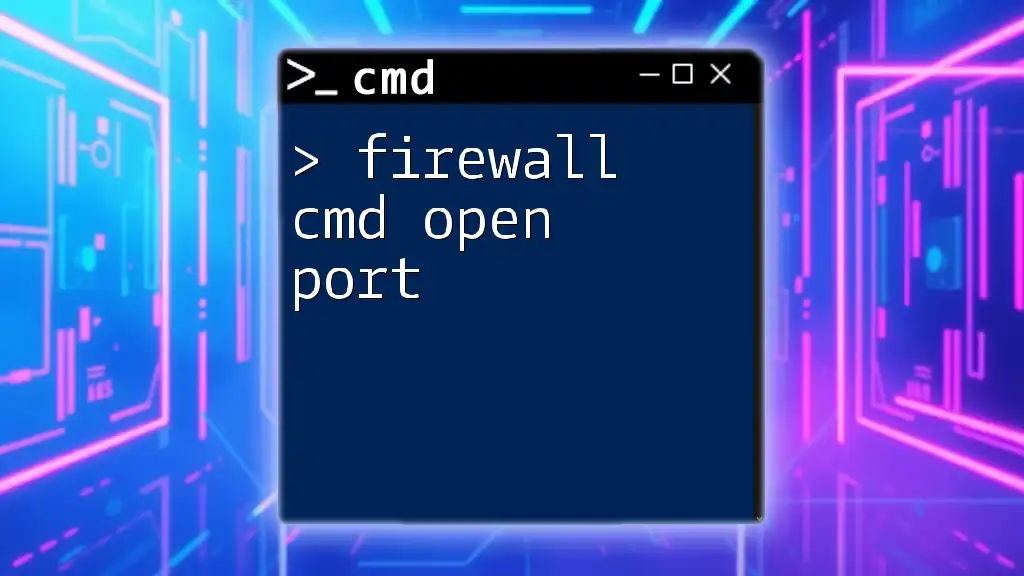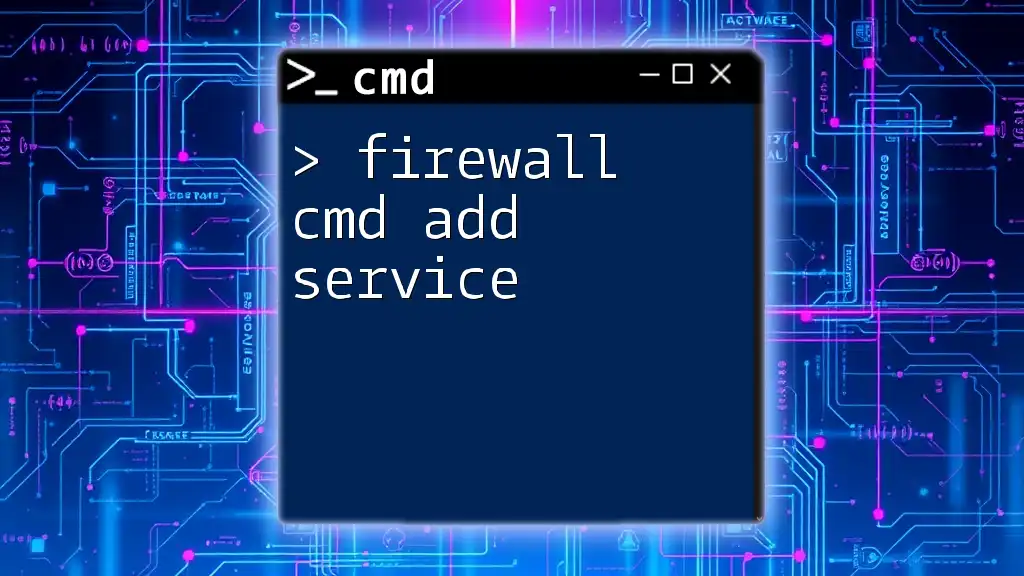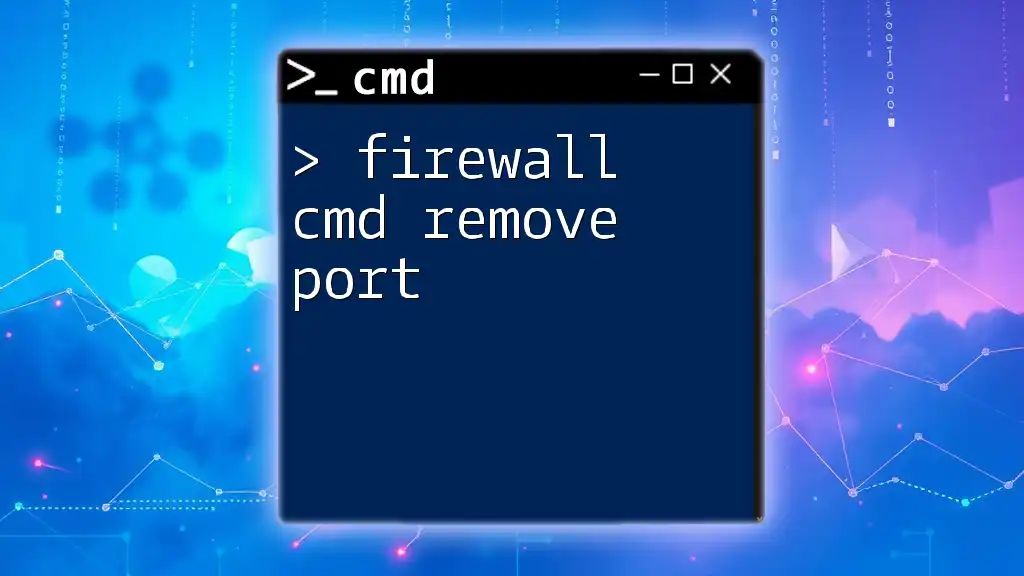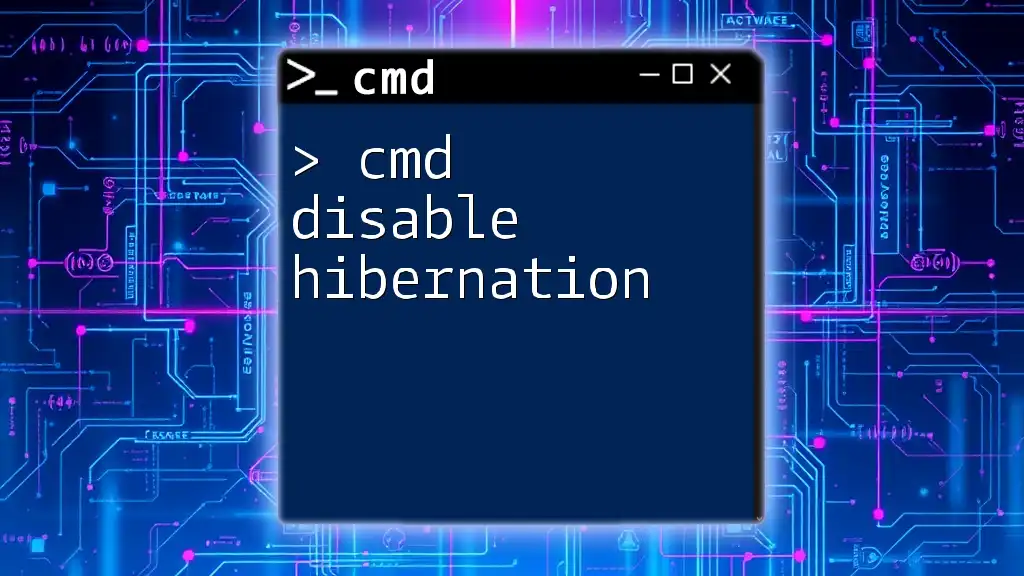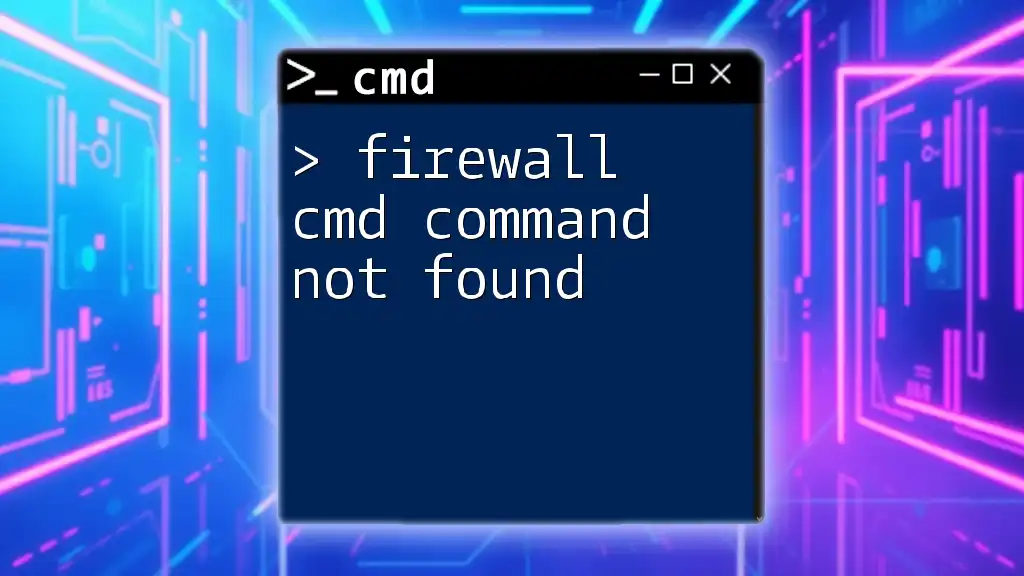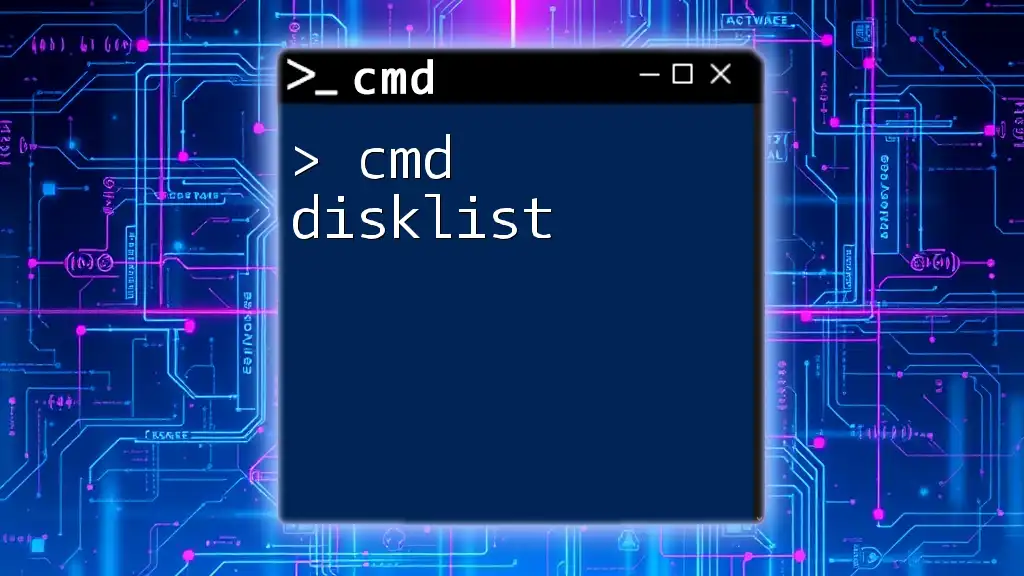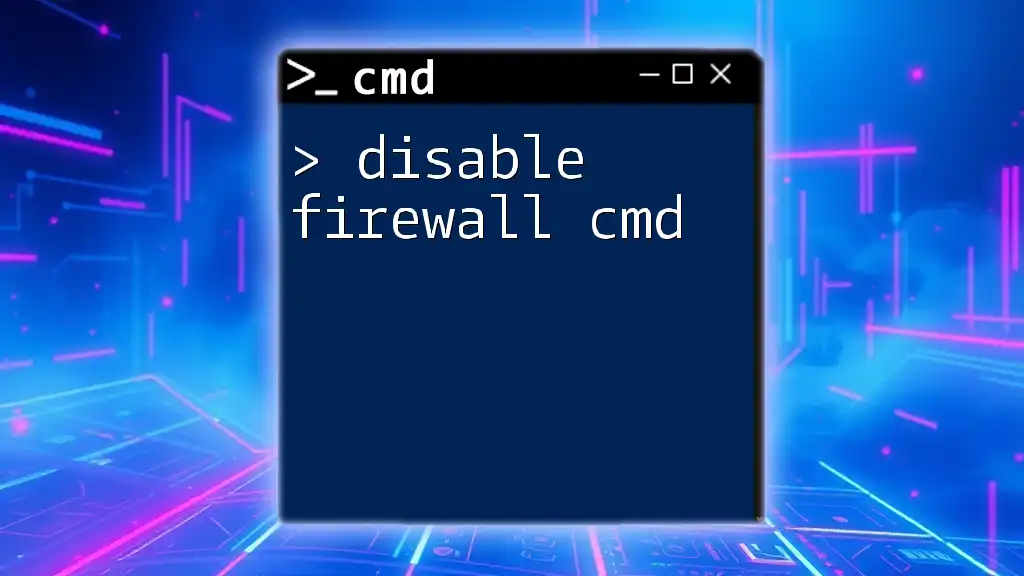The `firewall-cmd disable` command is used to stop and disable the firewall service on a Linux system that uses firewalld, effectively allowing all inbound and outbound traffic.
sudo firewall-cmd --state
sudo systemctl stop firewalld
sudo systemctl disable firewalld
Understanding FirewallD and firewall-cmd
What is FirewallD?
FirewallD is a dynamic firewall management tool commonly used in Linux environments to manage network traffic. Unlike traditional firewalls that rely on static rules (like iptables), FirewallD offers a zone-based approach that allows users to define different trust levels for network connections. This flexibility helps to dynamically adjust firewall rules according to changing network conditions.
Introduction to firewall-cmd
The command-line utility firewall-cmd is integral to managing FirewallD configurations. It provides a straightforward interface to interact with FirewallD, allowing users to add, remove, or modify firewall settings directly from the terminal.
Basic Syntax
Understanding the basic syntax of firewall-cmd is essential for successful command execution. The general structure follows this pattern:
firewall-cmd [OPTIONS]
Here, OPTIONS include commands to specify actions such as modifying zones, services, or rules.
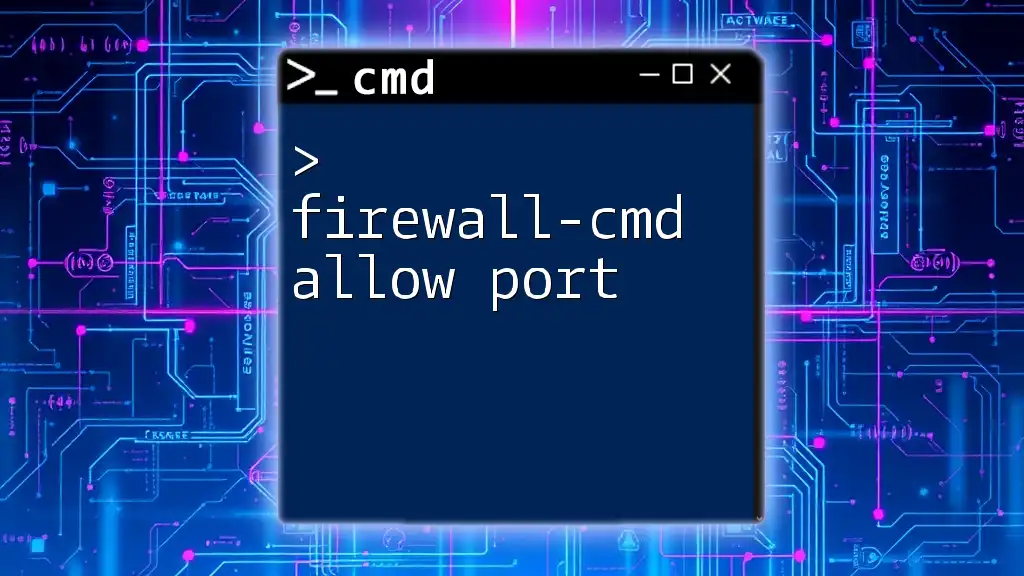
Overview of `firewall-cmd disable`
What Does `firewall-cmd disable` Do?
The command `firewall-cmd disable` is crucial for temporarily deactivating specific zones or services within the firewall. When executed, it effectively disregards all rules associated with that zone or service, allowing unrestricted traffic.
Impact on System Security
Disabling the firewall can expose your system to potential vulnerabilities. It is crucial to understand that once a zone is disabled, all inbound and outbound traffic is allowed, which could lead to unauthorized access. Therefore, this action should be taken with caution, primarily in controlled environments such as testing or development setups.
Common Use Cases
- Testing and Troubleshooting: Often used when troubleshooting network issues to quickly assess whether the firewall is the root cause of connectivity problems.
- Development Environments: During application development, developers may temporarily disable the firewall for easier testing of services and protocols.
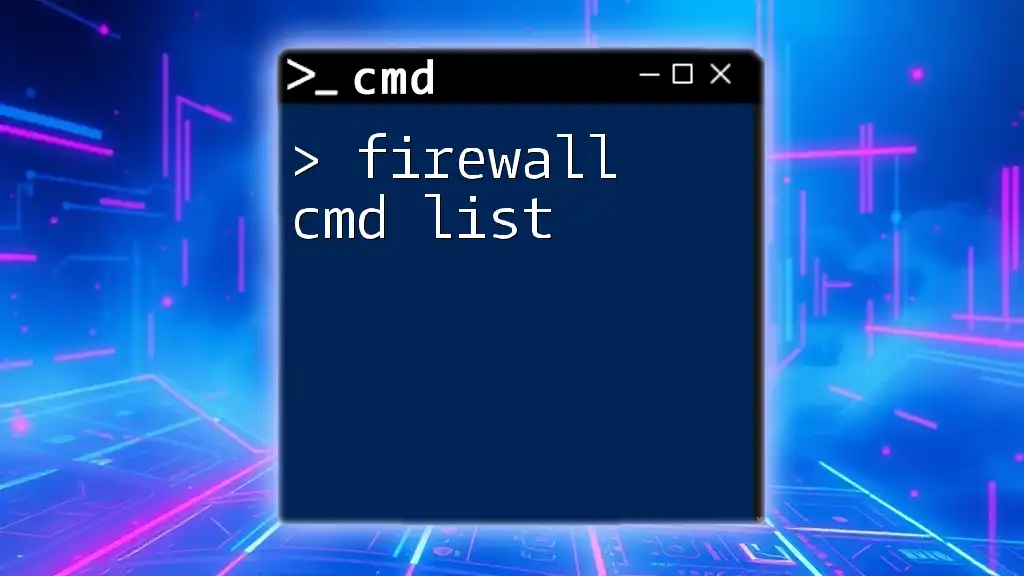
How to Use `firewall-cmd disable`
Basic Command Syntax
To disable a firewall zone, the command syntax is structured as follows:
firewall-cmd --zone=<zone> --set-target=disabled
This command specifies which zone to disable completely.
Step-by-Step Guide to Disable Firewall
Identify Active Zones
Before executing the disable command, it’s important to know which zones are currently active. You can list active zones with the following command:
firewall-cmd --get-active-zones
This will display all zones in use, helping you decide which one to disable.
Disabling a Zone Example
To disable a specific zone, you might run:
firewall-cmd --zone=public --set-target=disabled
This command deactivates the public zone, allowing all traffic through. It’s crucial to understand that this means no filtering of packets occurs for this zone, which should only be done if absolutely necessary.
Verifying the Status
After executing the disable command, you should verify that the zone is successfully disabled by running:
firewall-cmd --get-active-zones
In the output, you should see that the target of your specified zone has changed to disabled. This confirmation is essential to ensure that the firewall settings reflect your command execution.
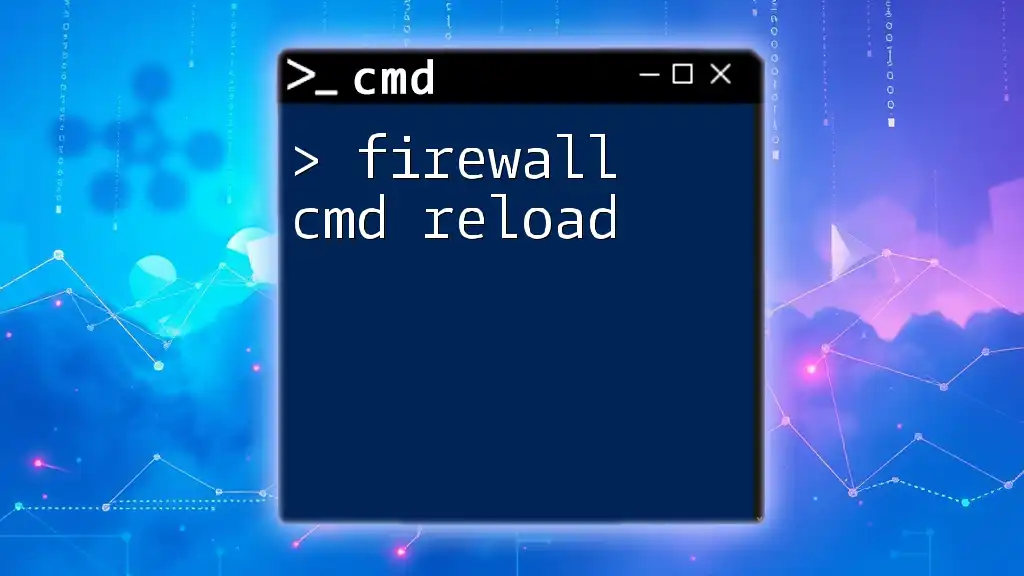
Re-enabling the Firewall
How to Enable Firewall Again
Once the necessary tests or changes have been made, it’s important to re-enable the firewall to restore security. Use the following command to set the zone back to its default state:
firewall-cmd --zone=<zone> --set-target=default
Example
For instance, to re-enable the public zone, run:
firewall-cmd --zone=public --set-target=default
Re-checking the Status
To confirm that the zone has been re-enabled, execute:
firewall-cmd --get-active-zones
Ensure that the output indicates the target is back to its default state, reapplying any rules that govern traffic for that zone.
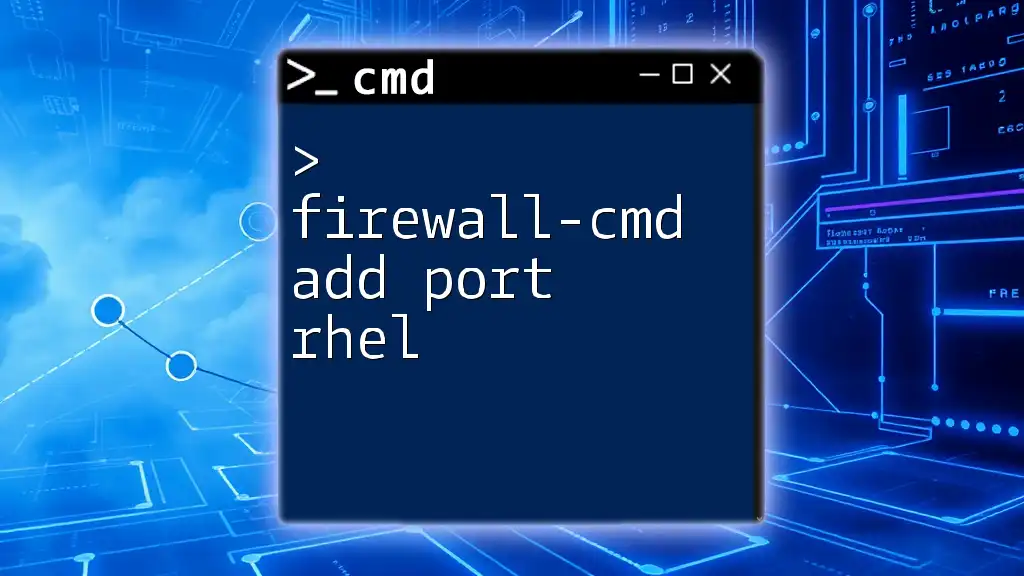
Common Issues and Troubleshooting
Potential Errors When Disabling
Disabling the firewall using the command line is usually straightforward, but you may encounter issues.
-
Access Denied Issues: This can occur if your user lacks the required permissions. Ensure you are running commands as a superuser or with sudo privileges when necessary.
-
Command Not Found: If you see this error, make sure that FirewallD is installed on your system and that you are using the correct command syntax.
Best Practices When Disabling the Firewall
Before disabling the firewall, consider the following best practices:
-
Ensure System Security: Understand the risks involved and only disable the firewall in secure environments or when you are confident that no external threats are present.
-
Logging and Monitoring: Keep track of your command executions and any changes in traffic patterns while the firewall is disabled. Logging can help you revert back to a secure state if anything goes awry.
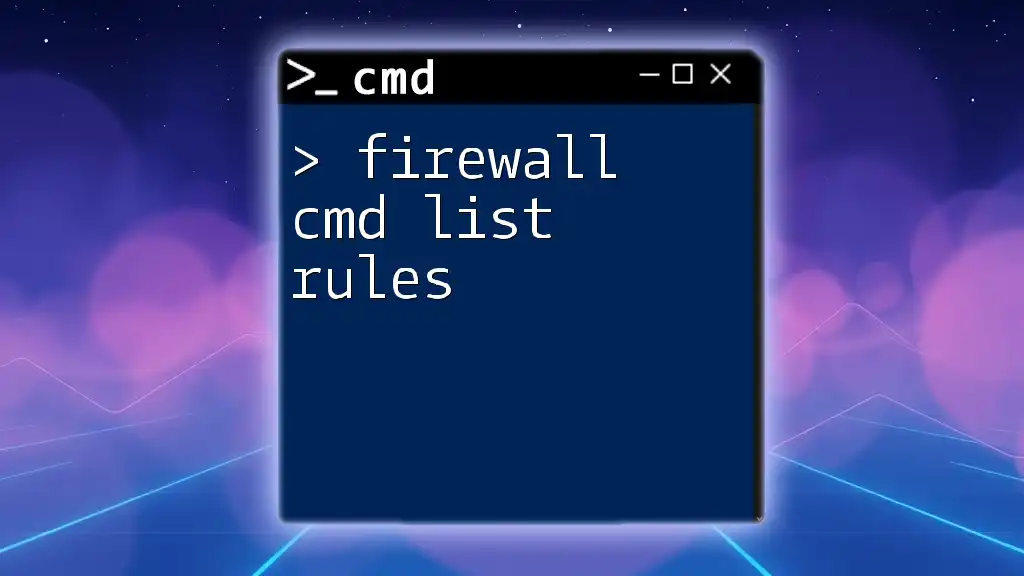
Conclusion
Summary of Key Points
In summary, using `firewall-cmd disable` is a powerful but potentially risky command that can help in troubleshooting and development. Understanding how to disable a zone, verify its status, and subsequently enable it again is crucial for maintaining system security.
Encouragement to Experiment
As you become more familiar with FirewallD and firewall-cmd, feel free to delve into advanced features, such as more complex rules and various configurations that enhance your network security management.
Call to Action
If you found this guide helpful, feel free to leave a comment or ask questions! Additionally, consider exploring our training services to master command-line operations comprehensively.








